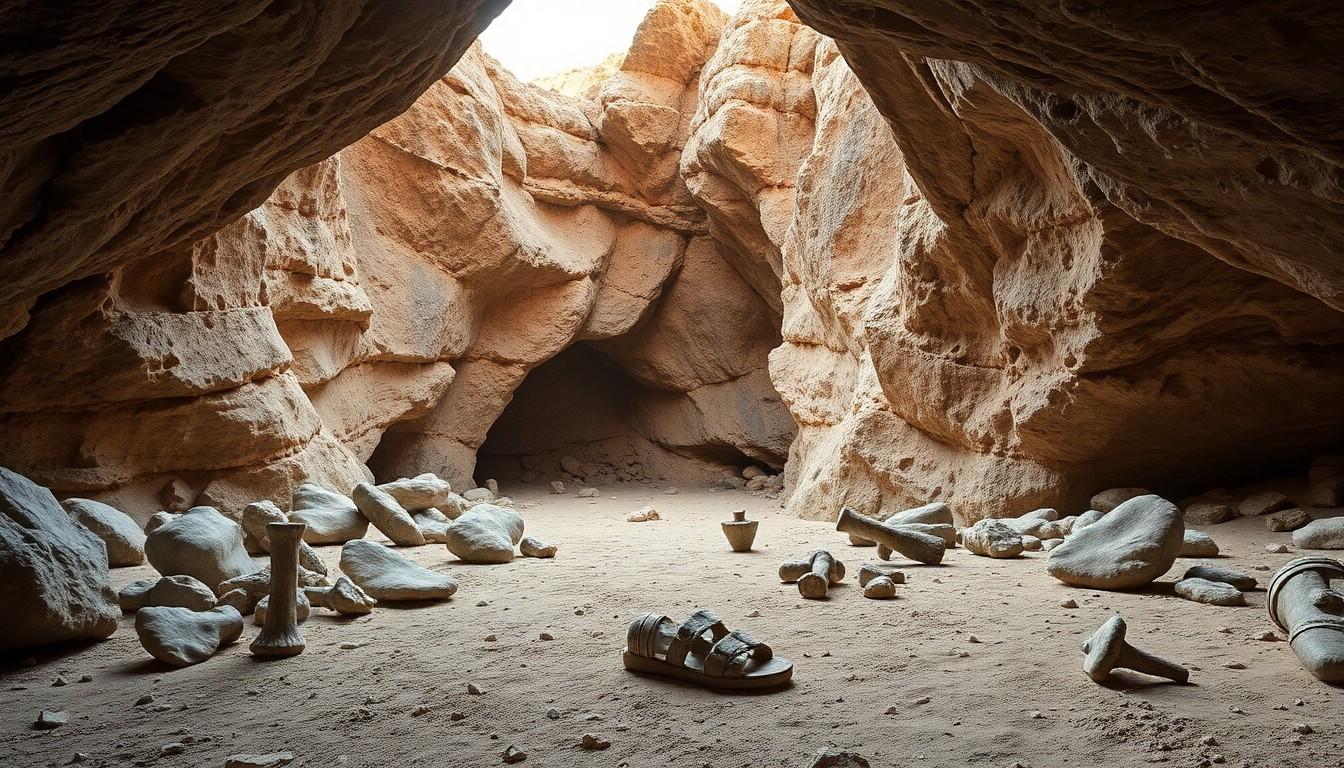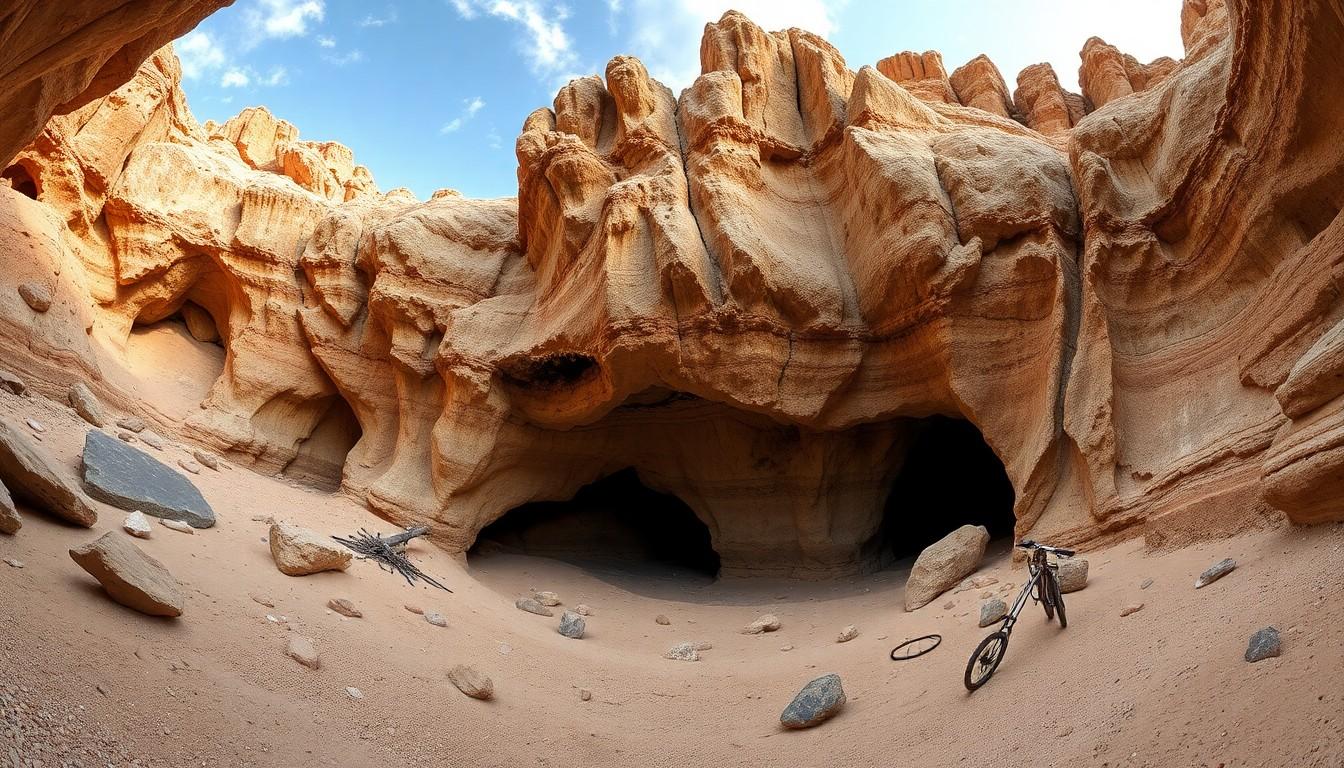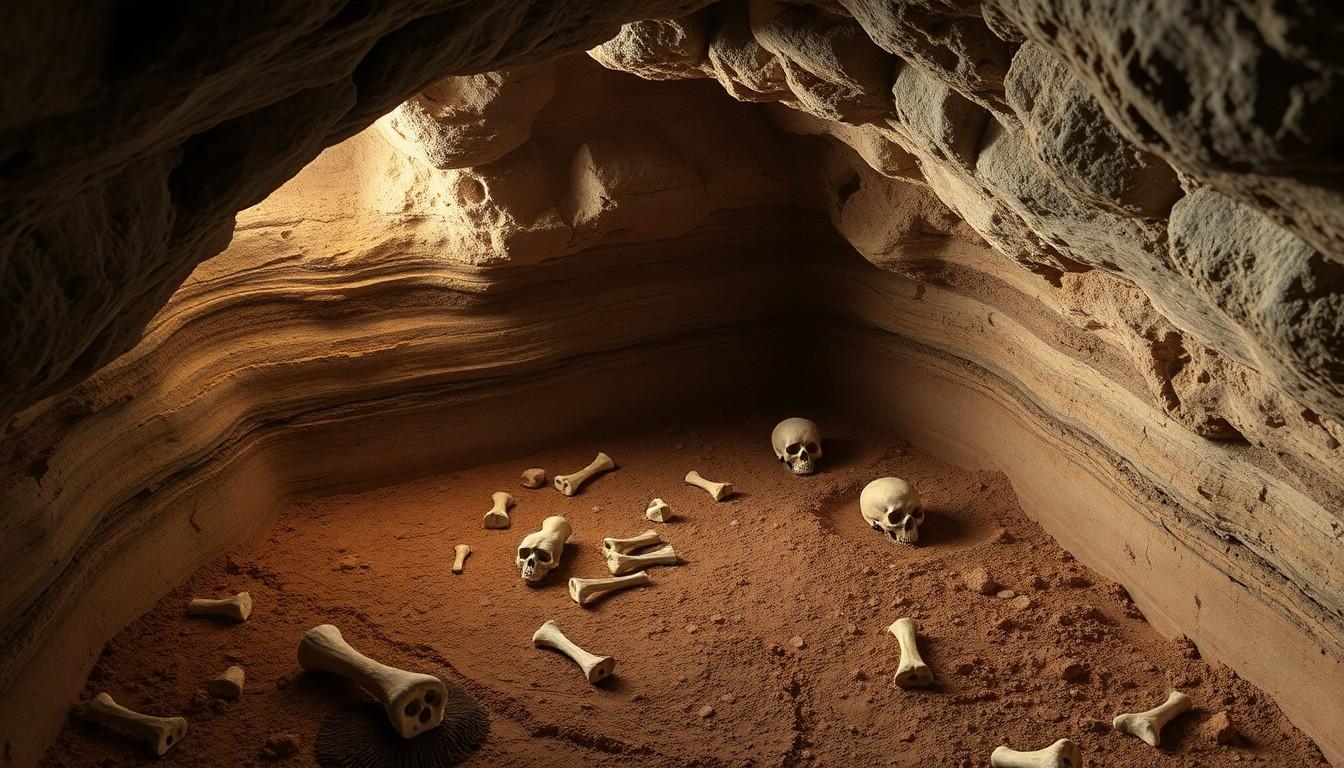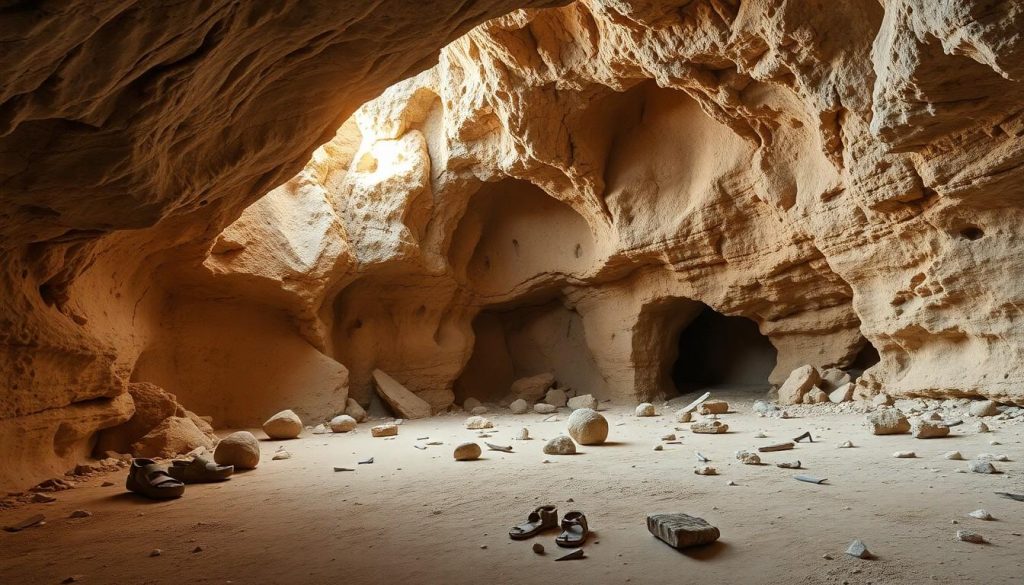Deep within Nevada’s rugged landscape lies Lovelock Cave, a site steeped in mysterious legends of giant red-haired warriors. This ancient dwelling, first discovered in 1911, has captivated archaeologists and historians with its remarkable artifacts and the intriguing tales of the Paiute people, who speak of a fierce tribe called the Si-Te-Cah.
The story of the Lovelock Cave giants challenges conventional archaeology and intersects with Native American oral traditions. Scientific excavations have unearthed peculiar findings, including giant sandals and tools that seem too big for average human use. These discoveries have sparked debates about whether a race of giants once roamed the American Southwest, making Lovelock Cave one of North America’s most enigmatic archaeological sites.
The Discovery of Lovelock Cave
Lovelock Cave emerged as a significant archaeological site in Nevada’s Humboldt mountain range in 1911. It initially operated under the names Sunset Guano Cave, Horseshoe Cave, and Loud Site 18. The cave’s discovery marked the beginning of extensive archaeological investigations that would reshape our understanding of prehistoric Native American life.
Archaeological History and Initial Findings
The cave’s archaeological significance came to light when miners David Pugh and James Hart encountered numerous prehistoric artifacts during their guano mining operations. Their discovery prompted communication with Alfred Kroeber, the founder of the University of California Anthropology Department, initiating formal archaeological investigations at the site. The artifacts revealed evidence of continuous human occupation dating back thousands of years.
Guano Mining and Early Excavations
Mining operations 1911 dramatically altered the cave’s original state when Pugh and Hart extracted massive quantities of bat guano. The excavation removed:
| Mining Details | Measurements |
|---|---|
| Guano Depth | 3-6 feet |
| Total Weight | 250 tons |
- Disruption of original artifact positioning
- Loss of valuable archaeological material
- Disturbance of multiple prehistoric occupation layers
- Compromised dating accuracy for certain cave sections
Mysterious Giant Remains

The legend of Lovelock Cave giants stems from Northern Paiute oral traditions describing a tribe of tall, red-haired beings known as “Tule Eaters.” These accounts have sparked archaeological investigations to validate claims of giant inhabitants in the cave.
Physical Evidence and Artifacts
Native American oral histories detail conflicts with the Si-Te-Cah, portraying them as aggressive cannibalistic warriors. The Northern Paiutes’ accounts describe a final battle where they trapped these giants in Lovelock Cave, using fire and arrows to eliminate their adversaries. Archaeological excavations have uncovered distinctive artifacts associated with these stories:
- Large-sized sandals preserved in the cave’s dry conditions
- Tools proportionally larger than typical finds from the same period
- Red-haired mummies, aligning with traditional descriptions
Anthropological Measurements
Scientific analysis contradicts claims of 10-foot giants inhabiting Lovelock Cave. Key findings from anthropological studies include:
| Study Details | Measurements | Time Period |
|---|---|---|
| University of Nevada Research | 6 feet average height | Mid-1970s |
| Standard Height Comparison | Within normal range | Period-specific |
The skeletal remains discovered in the cave represent individuals of above-average but not extraordinary height for their time. These measurements align with typical human variation rather than supporting claims of a giant race.
Native American Oral Traditions

The Northern Paiute’s oral traditions contain detailed accounts of the Si-Te-Cah, a tribe of red-haired giants who once inhabited Nevada. Sarah Winnemucca Hopkins, daughter of a Paiute chief, documented these stories in her 1882 book “Life Among the Piutes: Their Wrongs and Claims.”
Paiute Tales of Red-Haired Giants
According to tribal accounts, the Si-Te-Cah, meaning “tule-eaters” in the Northern Paiute language, stood over 8 feet tall. These giants crossed the ocean on rafts made from tule plants to reach Nevada’s shores. The Paiute described them as fierce cannibalistic warriors who terrorized local tribes through violent raids on settlements. Tribal narratives emphasize the Si-Te-Cah’s distinctive physical characteristics: red hair, immense stature, and exceptional strength.
Cultural Significance of the Stories
The Si-Te-Cah legends are foundational to Northern Paiute’s cultural identity and historical narrative. These oral traditions connect modern Paiute communities to their ancestral lands through generations of storytelling. The tales demonstrate the tribe’s historical relationship with the Lovelock Cave region and validate their territorial claims. The stories’ preservation through Hopkins’ written documentation marks a crucial intersection between traditional Native American oral history and recorded anthropological accounts.
| Historical Documentation Details | |
|---|---|
| Documentation Year | 1882 |
| Author | Sarah Winnemucca Hopkins |
| Original Source | “Life Among the Piutes: Their Wrongs and Claims” |
| Documented Height of Giants | 8+ feet |
| Tribe Name Translation | Si-Te-Cah (tule-eaters) |
Scientific Analysis and Research

Scientific investigations of Lovelock Cave’s findings have provided concrete evidence that challenges the giant warrior narratives. Modern analytical methods, through systematic archaeological examination, reveal a more nuanced understanding of the cave’s inhabitants.
Modern Archaeological Studies
Archaeological analysis demonstrates that many alleged giant bones belonged to large prehistoric animals like mammoths. The skeletal remains found in the cave represent individuals measuring 5’11” to 6 feet tall, falling within normal height variations for ancient populations. Studies show the distinctive red hair observed on mummies resulted from chemical interactions with burial minerals rather than natural pigmentation.
Dating and Authentication Results
Radiocarbon dating places the cave’s occupation between 2580 BCE and 1000 CE. Here are the key authentication findings:
| Authentication Category | Results | Analysis Period |
|---|---|---|
| Skeletal Height Range | 5’11” – 6’0″ | 1920s-1960s |
| Artifact Dating Range | 4,530 years old | 1980s-2000s |
| Chemical Analysis of Hair | Mineral staining confirmed | 1990s |
- Stratified layers of human occupation spanning 3,500 years
- Tools proportionate to average human dimensions
- Textile fragments with standard weaving patterns
- Burial practices consistent with regional Native American customs
Debating the Legend
The Lovelock Cave giants’ legend sparks debates between traditional Paiute oral histories and archaeological evidence. Northern Paiute accounts describe the Si-Te-Cah as red-haired cannibalistic giants, while scientific findings present a more nuanced perspective.
Historical Documentation
The Northern Paiute oral tradition details the Si-Te-Cah as fierce warriors who constructed tule rafts to navigate Lake Lahontan’s waters. These accounts describe a prolonged conflict culminating in a unified tribal effort to trap the giants in Lovelock Cave. The Paiute people’s historical narrative identifies the Si-Te-Cah as hostile cannibals who posed a significant threat to neighboring tribes.
Alternative Theories
Archaeological excavations in 1912 and 1924 revealed thousands of artifacts that challenged the giant warrior narrative. The discovered human remains measure 5’11” and 6 feet tall, indicating above-average height for ancient populations rather than giant stature. The scientific analysis attributes the red hair on mummified remains to chemical interactions with burial minerals instead of natural coloring. The excavated artifacts align with typical Native American tools and burial practices of the region, suggesting a standard human settlement rather than a civilization of giants.
Bottom Line
The Lovelock Cave mysteries showcase the fascinating intersection of Native American oral traditions and modern scientific investigation. While archaeological evidence doesn’t support claims of 10-foot giants, the site remains culturally significant. The discovery of above-average-height individuals and distinctive artifacts has provided valuable insights into ancient American populations.
Today, Lovelock Cave stands as a testament to the rich cultural heritage of Nevada’s Indigenous peoples. Though scientific findings have demystified some aspects of the Si-Te-Cah legend, the site continues to captivate researchers and history enthusiasts alike, demonstrating how archaeological discoveries can bridge the gap between folklore and historical fact.

